Battlefleet Gothic: Armada – Review
by Ste
|
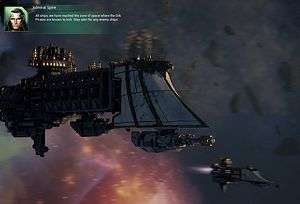 Battlefleet Gothic is the latest Games Workshop licence to be translated into the digital realm with Battlefleet Gothic: Armada, a real time strategy game by Tindalos Interactive and published by Focus Home Interactive. The original tabletop game is a horrendously complicated turn-based miniatures game set in the 40k universe featuring massive, multi-kilometre-long battleships, along with a host of other smaller vessels, including special rules for fighters, bombers, missiles, and whatever else you can think of. Slapping all of this into a cohesive RTS experience was never going to be an easy feat, however Tindalos seem to have done an admirable job of it.
Battlefleet Gothic is the latest Games Workshop licence to be translated into the digital realm with Battlefleet Gothic: Armada, a real time strategy game by Tindalos Interactive and published by Focus Home Interactive. The original tabletop game is a horrendously complicated turn-based miniatures game set in the 40k universe featuring massive, multi-kilometre-long battleships, along with a host of other smaller vessels, including special rules for fighters, bombers, missiles, and whatever else you can think of. Slapping all of this into a cohesive RTS experience was never going to be an easy feat, however Tindalos seem to have done an admirable job of it.
The tabletop game allowed players to create their own fleets using a points system. The bigger, more powerful, ships might be worth hundreds of points, whereas the smaller escort ships might only be worth forty or so. Generally speaking, opposing fleets should balance each other out providing the points values are roughly the same. Armada uses the same system, in both the campaign and multiplayer modes, allowing you to use whatever ships you have available and thus letting you play however you like, or to try out new tactics. As you play the game, new ships can be unlocked and existing ships can be upgraded with better weapons, shields, and even crew. This is done by spending Renown points. Win or lose, Renown points are earned as you play, however you will get more points if you win, and further bonus points if you can do so with a fleet which is under the points limit for the game. I really enjoyed customising my ships and messing around in the fleet builder; there are a hell of a lot of options available to you.
In the multiplayer, players will create an Admiral and then choose one of the four available races: Imperial Navy, Chaos, Orks, or Eldar. This Admiral and his progression is fixed to that race. If you want to try a new race you’ll need to create a new Admiral and start from scratch. You will then get matched to another player around the same level as you and then off you go. While I did always manage to get a game, at times there were long waits for matches, and now and again I’d get matched against players who were higher than me in level and therefore gave me a good kicking. This is probably just down to the lack of available players at my level, however it was still pretty annoying. Especially after having to wait so long for a match in the first place.
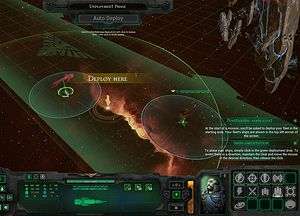 Multiplayer mode aside, the more interesting element of the game is definitely the single-player campaign. After a very brief, and in my opinion inadequate, tutorial, in which you assume the role of Admiral Spire of the Imperial Navy and discover that the forces of Chaos are invading the sector, you are taken to a star map which shows a specific sub-sector within the Gothic area of the galaxy. Within this sub-sector there are various solar systems which contain Imperium-controlled planets. It’s on this map that new missions will pop up, some will be mandatory campaign missions which drive the story forward and therefore must be done, but others will be optional and completing them will prevent that sector from falling under enemy control.
Multiplayer mode aside, the more interesting element of the game is definitely the single-player campaign. After a very brief, and in my opinion inadequate, tutorial, in which you assume the role of Admiral Spire of the Imperial Navy and discover that the forces of Chaos are invading the sector, you are taken to a star map which shows a specific sub-sector within the Gothic area of the galaxy. Within this sub-sector there are various solar systems which contain Imperium-controlled planets. It’s on this map that new missions will pop up, some will be mandatory campaign missions which drive the story forward and therefore must be done, but others will be optional and completing them will prevent that sector from falling under enemy control.
Unfortunately you can only carry out a set number of deployments during a turn, therefore you have to carefully choose which missions you wish to undertake. Failing missions, and thus losing systems, will make it more difficult for you down the line, however there will be opportunities to win systems back. To further compound issues, if you find that a mission is going badly, there is no option to restart the mission and try again. The game encourages you to live with the result. At first I really liked this idea as it reminded me of playing Iron Man mode in XCOM, however the longer I went on the more frustrated I got, because this game is exceptionally difficult.
I’m not new to RTS games; I’ve been playing them since the days of the original Command & Conquer games. I started the Armada campaign on the Normal difficulty but found myself starting again on Easy after not winning any of the first five or six missions after the tutorial. Even on Easy, I still struggled, winning about half of my missions and even then these were straight up kill-all missions. Whenever the game would chuck a mission which was a bit more complicated at me, I’d generally lose. A good example of this would be a mission which required me to steal some data from a certain enemy ship. This was done by getting one of my larger ships to within a certain range of the target and then board it to steal the data. Once the data was secured, I just needed to jump my ship into warp and escape. Sounds easy, right? The first time I tried it, I hung around a little bit too long engaging the target ship at long range and the bloody thing jumped away into the warp. The next time this type of mission came up I went straight for the throat and stole the data pretty early. I then started the warp timer on my ship in order to escape. Just after I did, a different enemy ship stole the data back! There was a button which should have cancelled the warp jump, but for some reason the game wouldn’t let me click it and so my ship warped away and I lost. I admit that this example just makes me sound completely incompetent, but I have many other examples of where the game just expects you to know what needed to be done with little to no explanation on how to do it. I found this incredibly frustrating at times, especially as you can’t restart missions. I wasn’t expecting to have my hand held throughout the game, but the learning curve is very steep and the game makes little effort to explain different mechanics to you.
To further frustrate you, if you lose a ship in the campaign, that ship is gone forever, along with all its upgrades and the like. This, in turn, makes the game all the more difficult going forward, especially if you’ve lost a particularly powerful ship and don’t have the Renown points available to immediately replace it. The same goes for the multiplayer mode – lose a ship and it’s gone. Sometimes it’s a tough choice whether or not to bring along your best ships and risk losing them completely if you lose.
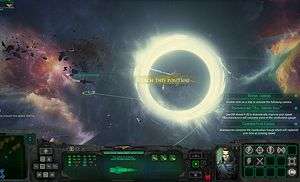 Once fleets become a certain size, there is a hell of a lot of stuff happening on screen. Ships can be commanded to engage from various distances with either their broadside weapons or those on their prow. Some ships can fire missiles which, whilst incredibly powerful, do not track their targets and so you have to time when you fire them. Each enemy ship can also have specific areas targeted. Do you want to target their engines to slow them down? How about you target their weapons to make them less dangerous? Or fire on their power generators to make their shields less effective?
Once fleets become a certain size, there is a hell of a lot of stuff happening on screen. Ships can be commanded to engage from various distances with either their broadside weapons or those on their prow. Some ships can fire missiles which, whilst incredibly powerful, do not track their targets and so you have to time when you fire them. Each enemy ship can also have specific areas targeted. Do you want to target their engines to slow them down? How about you target their weapons to make them less dangerous? Or fire on their power generators to make their shields less effective?
The ships can also be given priorities so that your ships will fire upon the highest priority target if given a choice. If that wasn’t enough, you also have to worry about not crashing your ships into each other, mutinies aboard ships which are low on health, dodging space debris such as asteroids, and other dangers such as mine fields, which are just lying in wait to ruin your day. Thankfully the map is only two-dimensional and you don’t have to worry about the height of your ships in relation to others on top of all this.
As you can imagine, when you have multiple groups of ships to juggle it can be very difficult to keep abreast of the situation. Thankfully, this has been recognised by Tindalos and they have included a “Tactical Cogitator” function which slows down the game with the press of the spacebar. This allows you more time to give orders and hopefully bring some element of control to a battle, but I still found myself struggling to keep up with everything going on, and most of the time I’d just select all my ships, click on a target and hope for the best while occasionally triggering abilities. On reflection, 90% of my games ended up with ships just circling while blowing holes out of each other. You are supposedly able to ram the enemy and pull off special manoeuvres with your ship’s thrusters but I never once managed to do it.
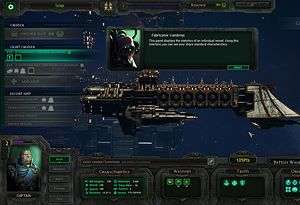 Visually, the game is stunning. Tindalos have done a fantastic job in the graphics department. The ships are exceptionally detailed and everything looks brilliant during battles. The backdrops to the battles look great too. I do wish that the game would allow you to zoom out a little bit further though, although there’s probably no need to be able to zoom in that close. Please be warned that you’re going to need a serious machine to run the game on the highest settings. I have a 3GB ATI card which runs the game quite comfortably, but even then I’ve noticed the odd frame drop during the in-engine cutscene close ups. I’d hate to see what the game looks like on a less powerful card.
Visually, the game is stunning. Tindalos have done a fantastic job in the graphics department. The ships are exceptionally detailed and everything looks brilliant during battles. The backdrops to the battles look great too. I do wish that the game would allow you to zoom out a little bit further though, although there’s probably no need to be able to zoom in that close. Please be warned that you’re going to need a serious machine to run the game on the highest settings. I have a 3GB ATI card which runs the game quite comfortably, but even then I’ve noticed the odd frame drop during the in-engine cutscene close ups. I’d hate to see what the game looks like on a less powerful card.
In the audio department all the ships make satisfying booms and fizzles when firing their weaponry, and the music is suitably 40k-esque in its nature. Think Dawn of War or Space Marine and you’re on the right track. The voice acting is a little bit generic, but like with most 40k games I found myself not paying too much attention to the story anyway as it’s generally just melodramatic nonsense that only the most devout 40k fan will be bothered about.
Overall, I had some fun with this game, however Armada is not for the faint hearted and I’m not sure I like it enough to keep coming back for long. The learning curve is extremely steep and with little to no help from the game itself, many will struggle initially. Nearly all of my games devolved simply into ships circling each other whilst firing until one of them gets destroyed, clever use of abilities would turn the tide of battle but usually the guy with the most ships would be the winner. However if you can stick with it and learn, Battlefleet Gothic: Armada has a lot to offer those willing to look for it. The fleet customisation options are brilliant, and this keeps the gameplay options in both singleplayer and multiplayer varied and interesting. I really liked the fleet-building element of the game; there is no right or wrong fleet to build and the game forces you to make some tough decisions in terms of what to bring to the field. Visually and audibly, Armada is very good, better looking than most other games currently available.
Pros- Looks fantastic
- Great fleet building options
- Big sense of scale
- Decent campaign
- Steep learning curve
- Not always clear what you need to do
- Difficulty is high
- Gets harder and harder the more you fail.
If you are willing to put in the effort and time then Battlefleet Gothic: Armada is not a bad game. There is plenty to see and do and could potentially keep someone occupied for a very long time. I love the fleet-building options, the graphics are great, and the battles look pretty cool. However I can’t really recommend this game, and unless you’re really into your space battle sims you will not get much out of Armada. My main problem with this game is that the first thing it does is to proverbially kick you in the face, and then expects you to keep up with it while continually ramping up the difficulty, and all the while you’re bleeding from your ears and missing a crucial number of teeth. The learning curve is just too steep, and for most people this is a pretty difficult thing to come back from. I can see a lot of people just sacking it clean off in favour of something that isn’t so much of a bastard, and for me that is a major problem.
Last five articles by Ste
- Acoustic Gaming: X-Wing Miniatures Game - Review
- Acoustic Gaming: Pandemic Legacy – Season One
- Bored Gaming
- U Wot Mate?
- Tabletop Simulator - Review


















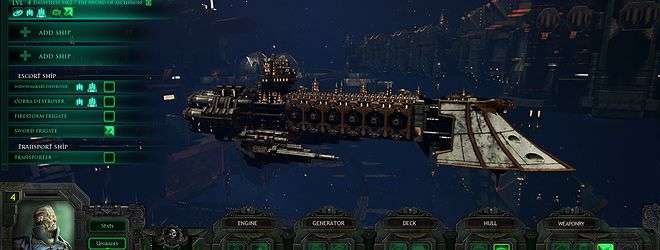
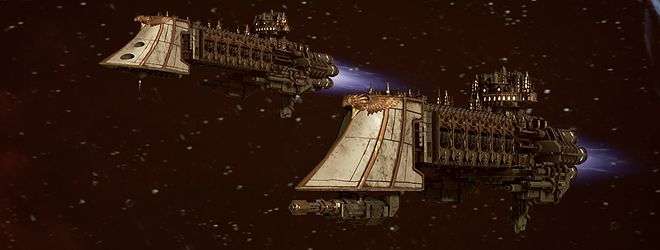
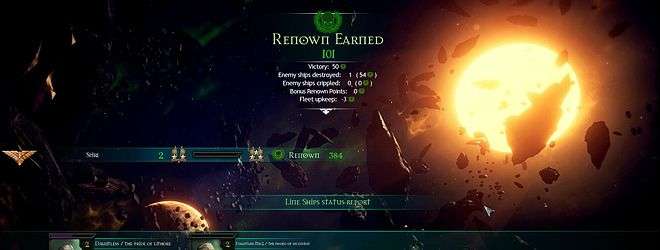






There are no comments, yet.
Why don’t you be the first? Come on, you know you want to!